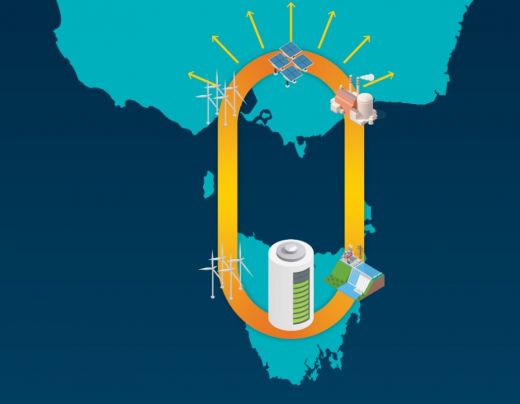
Tasmania’s proposed renewable energy target has the potential to establish the State as an innovative, low-carbon island which continues to lead the global charge to net-zero emissions.
This should be a central element of our vision for our post-pandemic future, according to a report from the University of Tasmania’s leading energy and emissions researchers.
In its submission to the State Government’s Draft Tasmanian Renewable Energy Action Plan, the University outlines how the State can capitalise on its renewable energy potential as the global push towards a low carbon economy gathers pace.
Working towards this vision would unlock a range of emissions reductions, and social and economic benefits, says Tasmanian Policy Exchange (TPE) Director, Professor Richard Eccleston.
“Tasmania has a real opportunity to capitalise on this transition given our renewable energy assets and low emissions profile,” Professor Eccleston said.
“If we can build and promote an authentic renewable energy and low-carbon ‘brand’ it will benefit exporters and help attract visitors whether they be tourists, students or migrants wanting to make Tasmania their new home.”
The Tasmanian Government has set a target to double renewable energy generation by 2040.
Professor Eccleston said achieving this target largely depends on the success of Project Marinus – a proposal to build two new undersea interconnectors between Tasmania and mainland Australia.
If this target is realised, Australia’s electricity sector emissions would be reduced by an estimated 7 per cent over 20 years, as a direct consequence of new renewable generation in the State.
He believes there are two key issues that should underpin the renewable energy debate in Tasmania over the coming months.
The first is considering what projects and investments are needed to achieve the target – and identifying and addressing the associated workforce planning and training needs.
The second is how we use surplus renewable energy to deliver long-term benefits. Both these opportunities require a concerted effort by government and the wider community to capitalise on the benefits of the Renewable Energy Action Plan.
“Above all, the real long-term benefits to Tasmanians will flow if we can identify innovative on-island uses for the additional renewable energy which will be generated, rather than being the battery for the national grid alone,” Professor Eccleston said.
“At the end of the day, our ambitious renewable energy strategy will only succeed if the vast majority of Tasmanians appreciate, support and ultimately benefit from it.”








